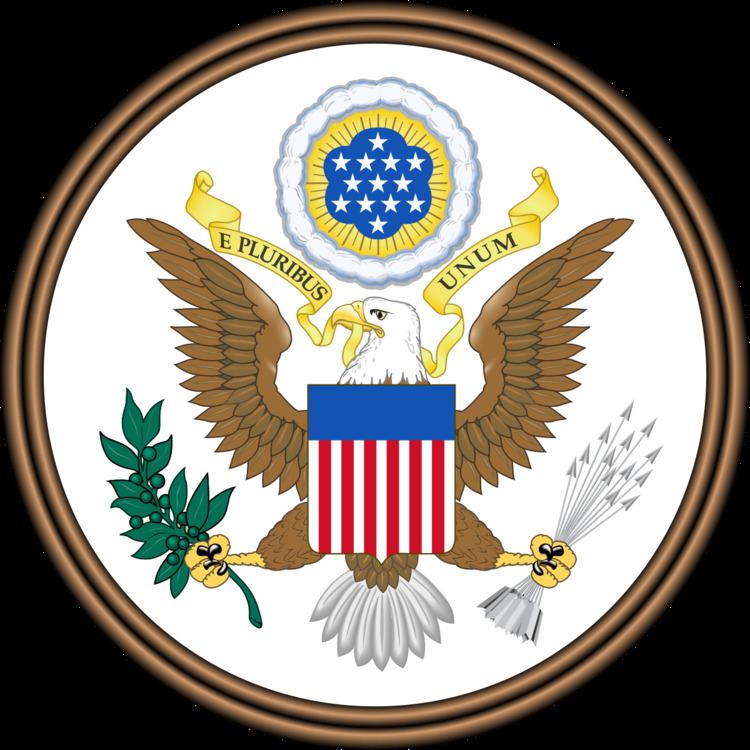Nicknames Burke-Wadsworth Act Public law 76-783 | Effective September 16, 1940 | |
 | ||
Other short titles Burke-Wadsworth Selective Training and Service Act
Selective Service Act of 1940 Long title An Act to provide for the common defense by increasing the personnel of the armed forces of the United States and providing for its training. Enacted by the 76th United States Congress | ||
The Selective Training and Service Act of 1940, also known as the Burke-Wadsworth Act, Pub.L. 76–783, 54 Stat. 885, enacted September 16, 1940, was the first peacetime conscription in United States history. This Selective Service Act required that men who had reached their 21st birthday but had not yet reached their 36th birthday register with local draft boards. Later, when the U.S. entered World War II, all men from their 18th birthday until the day before their 45th birthday were made subject to military service, and all men from their 18th birthday until the day before their 65th birthday were required to register.
Contents
Effects of the Act
Signed into law by Franklin Roosevelt in 1940, the Act established the first peace-time draft in United States history. Under the Selective Training and Service Act, all American males between twenty-one and thirty-five years of age registered for the draft. The government selected men through a lottery system. If drafted, a man served for twelve months. According to the Selective Training and Service Act's provisions, drafted soldiers had to remain in the Western Hemisphere or in United States possessions or territories located in other parts of the world. The act provided that not more than 900,000 men were to be in training at any one time, and it limited service to 12 months.
Section 5 (g) of the Act contained a provision for conscientious objection:
Nothing contained in this Act shall be constructed to require any person to be subject to combatant training and service in the land and naval forces of the United States who, by reason of religious training and belief, is conscientiously opposed to participation in war in any form. Any such person claiming such exemption from combatant training and service because of such conscientious objections whose claim is sustained by the local draft board shall, if he is inducted into the land or naval forces under this Act, be assigned to noncombatant service as defined by the President, or shall if he is found to be conscientiously opposed to participation in such noncombatant service, in lieu of such induction, be assigned to work of national importance under civilian direction.World War II draft
The draft began in October 1940, with the first men entering military service on November 18. By the early summer of 1941, President Franklin D. Roosevelt asked the U.S. Congress to extend the term of duty for the draftees beyond twelve months to a total of eighteen months, plus any additional time that he could deem necessary for national security. On August 12, the United States House of Representatives approved the extension by a single vote. As Under Secretary of the Army Karl R. Bendetson said in an oral history interview, "Mr. Rayburn banged the gavel at a critical moment and declared the Bill had passed." The Senate approved it by a wider margin, and Roosevelt signed the Service Extension Act of 1941 into law on August 18.
Many of the soldiers drafted in October 1940 threatened to desert once the original twelve months of their service was up. Many of these men painted the letters "O H I O" on the walls of their barracks in protest. These letters were an acronym for "Over the hill in October," which meant that the men intended to desert upon the end of their twelve months of duty. Desertions did occur, but they were not widespread. Following the Japanese attack on Pearl Harbor, Hawaii, on December 7, 1941 thousands of American men swelled the United States' military's ranks by volunteering for service, and thousands more by conscription.
After the United States entered World War II, amendments to the Selective Training and Service Act on December 20, 1941 made all men between the ages of 20 and 44 liable for military service, and required all men between the ages of 18 and 64 to register. The terminal point of service was extended to six months after the war. Another amendment signed on November 13, 1941 called the registered 18 and 19 year olds into military service. From 1940 until 1947—when the wartime Selective Training and Service Act expired after extensions by Congress—over 10,000,000 men were inducted.
